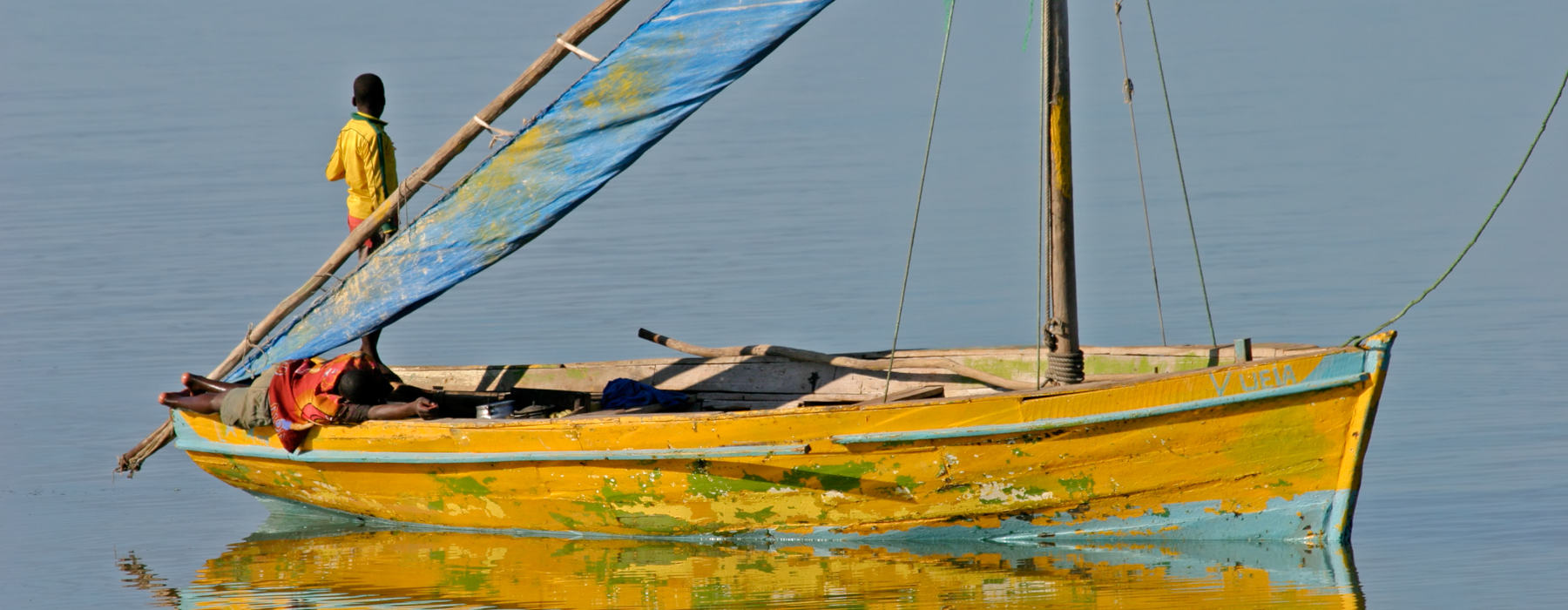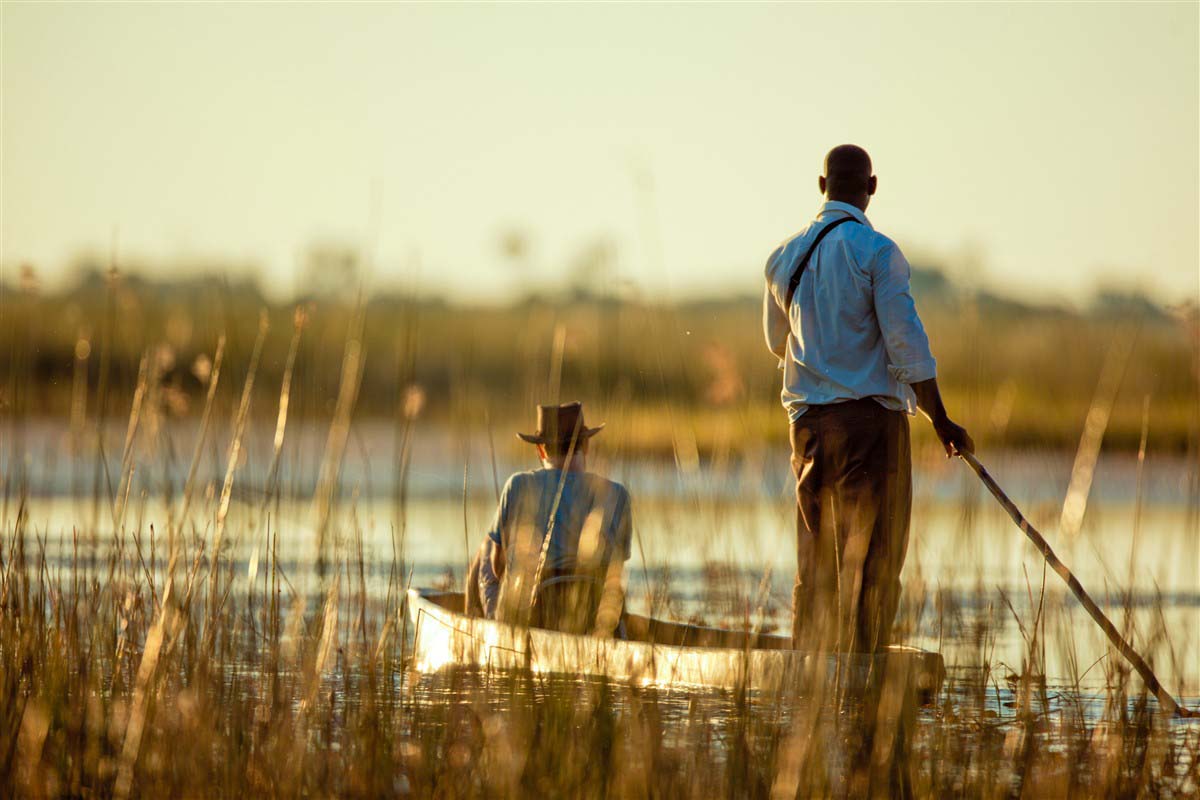Wildlife Spotting in Gorongosa National Park
Located at the heart of Central Mozambique, and spanning up to 1,500 square miles, Gorongosa National Park has a rich diversity of wildlife. Dedicated to conservation, and open since the 1960s as a national park, this attraction is the perfect thing to do in Mozambique with friends and family. Gaze upon one of the most ecologically diverse regions in the whole world and try to spot one of the bird species found only in the forests of Mount Gorongosa. Since reopening in 1998, after seeing the devastation to the animal population during the Mozambican civil war, the park has been focused on conserving and rehabilitating both the landscape and the wildlife.
Visit Inhaca Island
A narrow extension of the northward land that cuts Maputo Bay off from the Indian Ocean, Inhaca Island is the most accessible of Mozambique’s offshore islands. With mangroves along the coast, saturated reefs and tropical beaches, it’s a must-do on your trip to Mozambique. The most popular tourist destination of the island is the village of Inhaca, with bars and lodges lining the beachfront, where it is ideal to sit and watch the boats.
On the southwestern edge sits the marine biology research station, which offers a small museum, perfect for lovers of the ocean. Home to 490 fish species and nearly 300 species of birds, the island is a centre of scientific research, with its warm gulf creating one of the most southern reefs in Africa.
Another thing to do is hop on a boat to Ilha dos Portugueses, a small island and protected area, which we can arrange outings to. With large flat sandbanks at low tide, and a walk around the island in just over an hour, the small island is perfect for a day out. Although be sure to stick close to the island when swimming, as the current is very strong further out.
City Exploring in Maputo
Both the capital and largest city in the country, Maputo offers a number of extraordinary things to do in Mozambique. The city is located in the southern region of the country and is situated on a large natural bay facing the Indian Ocean. Maputo Railway Station serves as the main train station and is an amazing and historical architectural work, designed by Gustav Eiffel (of Eiffel Tower fame) and built in 1913. Inside sits not only the railway station but also the Kulungwana Espaço Artístico, offering an exhibition of works from both local and visiting artists.
The city also offers the attraction of the Tunduru Botanical Gardens, located at the Centre of Maputo. Built in 1885 and designed by Thomas Honney, the garden provides shade on hot summer days, and some peace and quiet away from the hubbub of the city. This tranquil place is also home to a number of species of birds and bats. Ideal for picnicking families, idyllic strolls or even tennis.
For lovers of education and history, the Maputo Natural History Museum is a must-do. Housed inside a beautiful and historic building with sprawling gardens, the interior is home to a rich and diverse collection of objects, from dioramas of water and ancient pottery to taxidermy.
A History Lesson at Chinhamapere Hill
One of the lesser-known spots in Mozambique, free of tourists, this location is a must-do for respectful lovers of history and beautiful scenery. Located on Mozambique’s side of the Vumba Mountains, Chinhamapere Hill has been inhabited since the Iron Age. Offering several hunter-gatherer rock paintings, some of the humans holding bows and arrows, all well preserved and around 8,000 years old. Surrounding the three rock art sites is dense savannah woodland, and the landscape and sites are involved in sacred traditional ceremonies.
Spot Marine Life in the Bazaruto Archipelago
Located in southern Mozambique and made up of six postcard-perfect islands, the Bazaruto Archipelago is a hub for marine life. Between June and September, the area is fantastic for diving, where you can expect to see healthy corals, whale sharks, manta rays, dolphins and plenty more. Around this time of year, you may also be lucky enough to see humpback whales, as they embark on their annual migration from Antarctica to the warmer climate of the South East African coast, where they then mate and calve. Our experts at Original Diving can help you plan the perfect Mozambique diving holiday to ensure you have the best chance of seeing the incredible marine life that calls this area home.
Discover the Island of Mozambique
Once a Portuguese trading post, the architecture of this fortified city owes its look to consistent building techniques used since the 16th century. Part of the Nampula Province, located off the coast of Northern Mozambique, the island is joined by a bridge to mainland Mozambique. The island is considered a UNESCO World Heritage Site due to its role in the establishment of maritime routes between Western Europe and India. The city has many notable buildings, including the Chapel of Nossa Senhora de Baluarte, the oldest European building in the southern hemisphere, completed in 1522. Of all the things to do in Mozambique, this island offers a wide range of experiences, from its preserved reef to some of the oldest examples of the country’s colonial history.
Dhow and Kayak Safaris
We can arrange private or set departure traditional dhow safaris and kayak safaris between some of the country's most remote islands, accessible only by boat. The safaris last for eight days and take you to some of Mozambique's most far flung and beautiful islands. A full team of staff and a competent sailing crew are on hand for the duration of the trip, meaning the hardest decision you have to make is whether to go snorkelling or explore one of the many uninhabited islands with an expert guide. There are also some exceptional opportunities for diving on some unexplored reefs. Each evening, the crew set up a mobile camp and freshly caught fish supper is prepared island-style on the beach while you relax watching the stars, with coconut crabs scuttling around on the sand.



